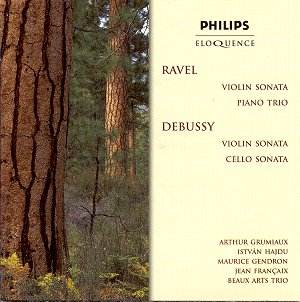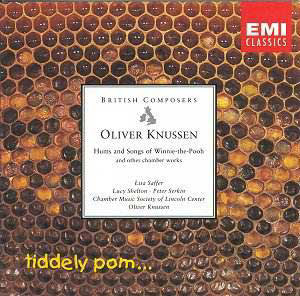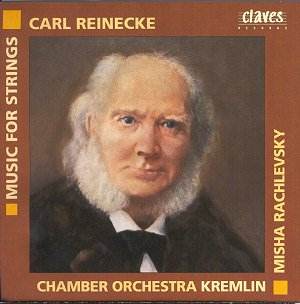 Composer: Maurice Ravel
Composer: Maurice Ravel
Works: Violin Sonata, Piano Trio
Performers: Arthur Grumiaux (violin), Istvan Hajdu (piano), Maurice Gendron (cello), Jean Francaix (piano), Beaux Arts Trio (Guilet, Greenhouse, Pressler)
Recording: Ravel Violin Sonata (1962), Debussy Violin Sonata (1963), Debussy Cello Sonata (1964), Debussy Trio (1966)
Label: Philips
Maurice Ravel and Claude Debussy stand as titanic figures in the constellation of French music, their works illuminating the transition from the Romantic to the modernist era. Ravel’s Violin Sonata and Piano Trio, alongside Debussy’s Violin and Cello Sonatas, represent the synthesis of impressionistic color and structural rigor that defines much of their output. This collection of performances, originally recorded between 1962 and 1966, encapsulates a moment in musical history when these masterpieces were interpreted by artists at the zenith of their craft.
The performance of Ravel’s Violin Sonata by Arthur Grumiaux and Istvan Hajdu is a masterclass in restraint and subtlety. Grumiaux’s tone in the first movement is ethereal yet grounded, reflecting the piece’s blend of introspection and elegance. His approach avoids excessive expressiveness, allowing the music’s inherent tension to resonate. A particularly striking moment occurs at 5:20, where Hajdu’s piano deftly balances against the violin’s lower registers, showcasing a partnership that thrives on mutual understanding. The second movement, “Blues,” is imbued with a rich, yet controlled sensuality; the duo navigates Ravel’s jazz-inflected rhythms with an impressive sense of continuity. Their interpretation of the finale is vigorous, yet beautiful, a hallmark of true chamber music performance that remains exemplary within the discography.
Grumiaux’s interpretation of Debussy’s Violin Sonata reveals an artist deeply attuned to the music’s fluidity and complexity. His nimble handling of the first movement’s shifting motifs illustrates an acute awareness of the sonata’s structural integrity, enhanced by a vibrato that is both expressive and nuanced. The Intermède, marked by its lively character, showcases the duo’s incisive interplay, where motivic details are illuminated without losing sight of the overarching narrative. At 1:40 of the finale, Grumiaux’s bow pressure is perfectly calibrated, allowing for a seamless dialogue with Hajdu’s piano, demonstrating an ideal balance of weight and clarity.
The partnership of Maurice Gendron and Jean Francaix in the Debussy Cello Sonata merits reexamination, as their collaboration rivals more celebrated duos. Their performance is characterized by a thoughtful pacing that allows for the subtleties of Debussy’s writing to emerge organically. The pizzicato in the opening of the Serenade is executed with an understated elegance, while the development section reveals a mastery of tonal gradations that is both captivating and illuminating. The wit inherent in Debussy’s music is brought to life through their dynamic phrasing, particularly in the finale, where their anticipation and release create a compelling narrative arc.
The Beaux Arts Trio’s interpretation of the Piano Trio is nothing short of extraordinary. Their 1966 recording captures the work’s emotional ebb and flow with remarkable precision. The opening movement showcases a delicate interplay between the instruments, fluctuating between spirited exchanges and moments of introspection. The Pantoum is executed with a controlled passion that highlights the ensemble’s cohesion, while the Passacaille reveals a profound understanding of the work’s architecture. The finale’s climactic moments are particularly effective, with the piano’s incisive bass lines punctuating the texture in a way that is both exhilarating and refined.
This compilation of performances stands as a testament to the enduring power of these masterworks and the extraordinary caliber of the artists involved. The sound quality, engineered with care, allows for a clarity that enhances the intricate dialogues of the ensemble. While other recordings may boast more opulent acoustics or contemporary acclaim, none encapsulate the same level of musical profundity and artistic integrity. This disc remains an essential addition to the repertoire, a paragon of elevated music-making that continues to resonate with authenticity and grace.



